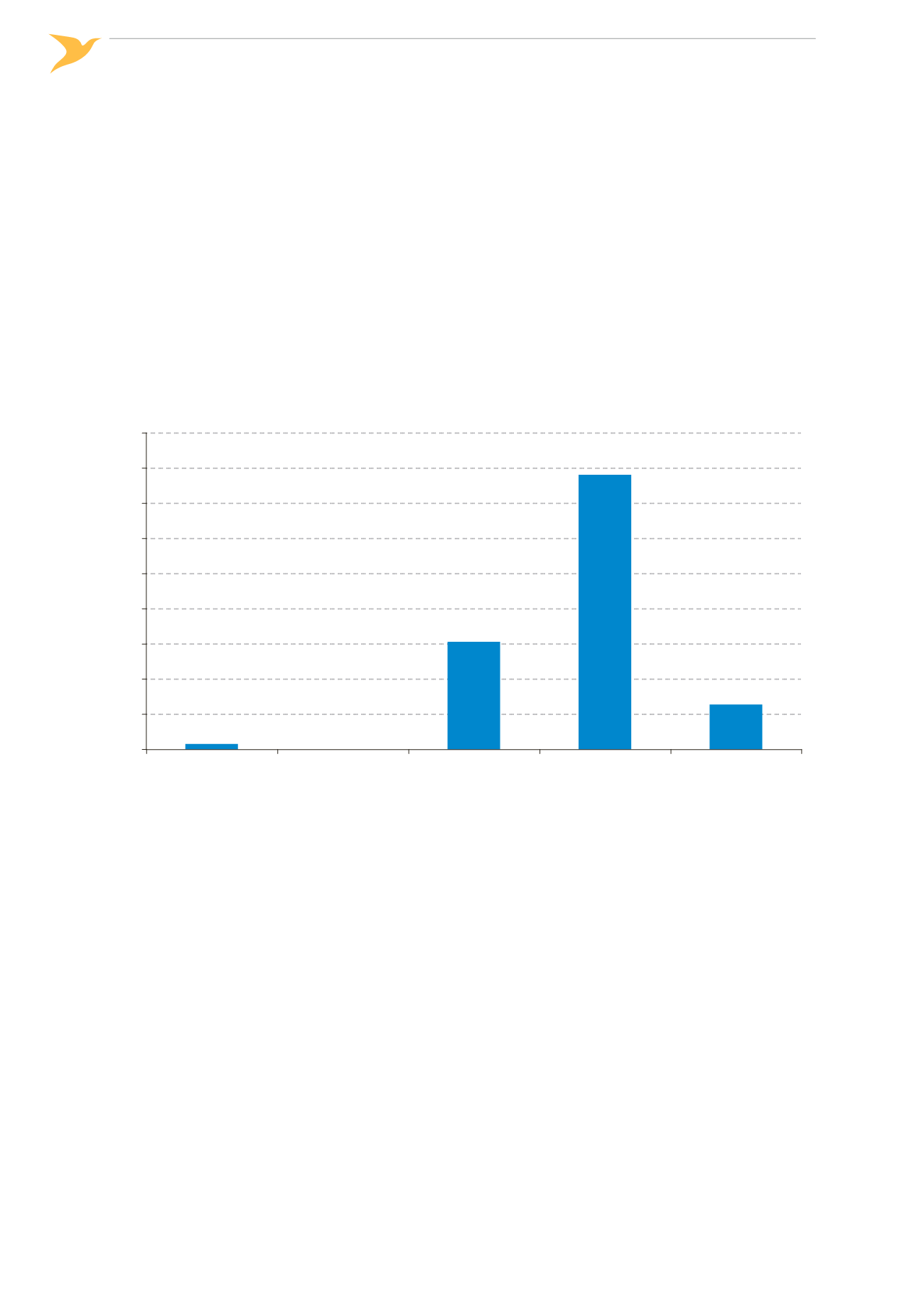

Annual Safety Review 2014
Commercial Air Transport
PAGE
44
Mass Group
Figure 10 shows the number of accidents and serious incidents by the different mass groups of the aircraft. Due
to the fact that events may involve more than one aircraft, the picture shows a mass group not considered with‑
in the scope of the this chapter (i.e., 2250 kg, corresponding to events involving a CAT FW aircraft and an aircraft
below 5700 kg, most likely in a MAC event). Again, the number of accidents correlates with the spread of the
commercial aircraft fleet in Europe. Medium‑sized jet powered aircraft such as the Airbus A320 and Boeing 737
form the mainstay of many airline fleets and these fall into the 27001 to 272000 kg mass group.
´
´
Figure 10:
Distribution of accidents and serious incidents 2005-2014, per aircraft mass
group involved
0
20
40
60
80
100
120
140
160
180
0-2 250 kg
2 251 to 5 700 kg
5 701 to 27 000 kg
27 001 to 272 000 kg
> 272 000 kg
Occurrence Categories
The assignment of an accident under a single or multiple occurrence categories assists in the identification of par‑
ticular safety risk areas. Occurrence categories were assigned to accidents and serious incidents in the scope of this
chapter based on the definitions of the CAST‑ICAO Common Taxonomy Team (CICTT). The CICTT have developed
a common taxonomy for the classification of occurrences for accident and incident reporting systems. Further infor‑
mation about the categories used in this report can be found in Appendix 1: Definitions and Acronyms. An accident
may have more than one category, depending on the circumstances contributing to the accident.
Table 6 provide details of the number of accidents and fatal accidents associated with each occurrence category
in 2014 and the average over a ten‑year period (2004-2013). This information is also shown graphically in Figure
10. Loss of control in‑flight (LOC‑I) remains the top safety risk area with six fatal accidents recorded in the last

















